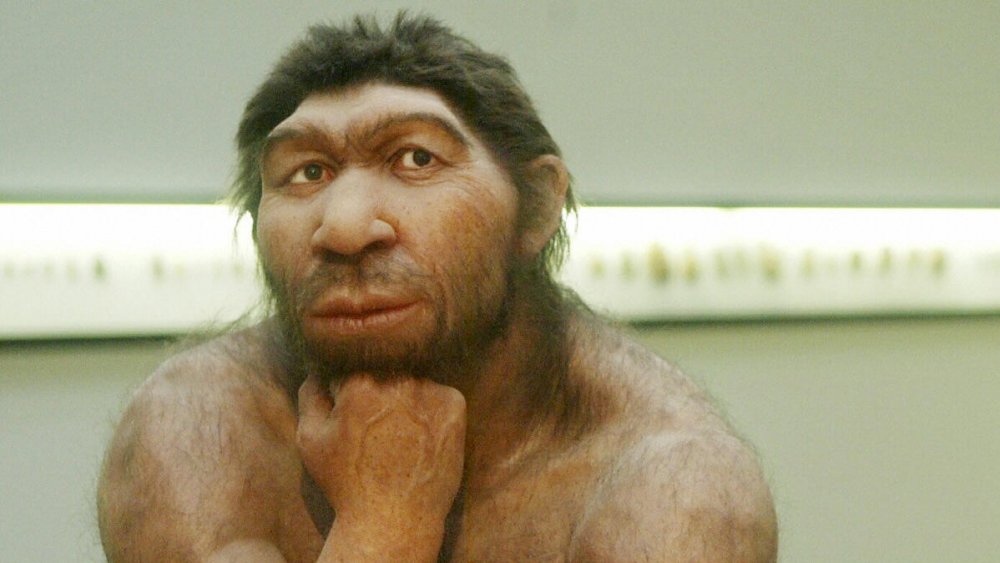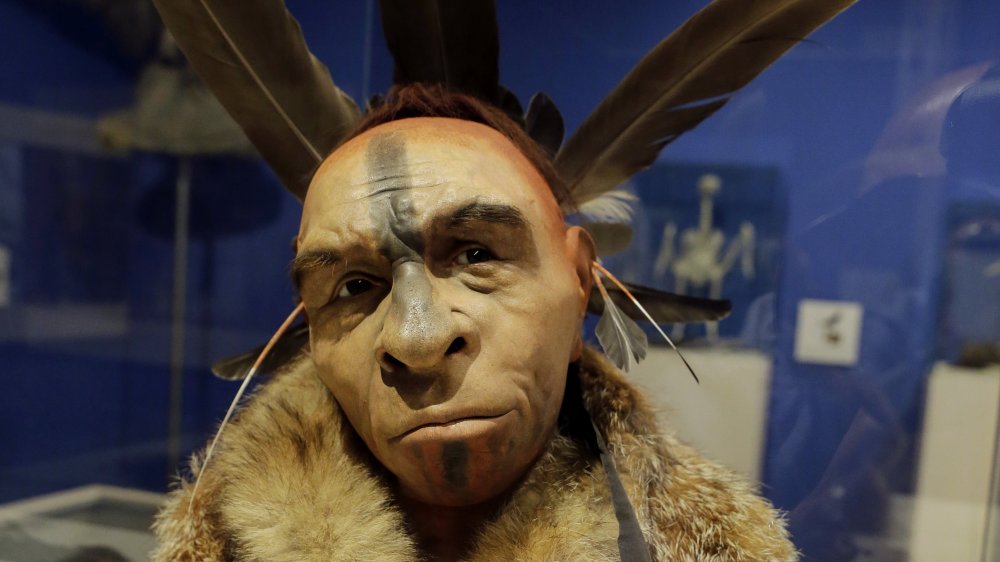What Life Was Really Like For Neanderthals
When trying to flesh out the bones of history, it's important to show a bit of humility because sometimes the difference between obvious knowledge and false beliefs is the date on which you read about them. For instance, in 2011, an archaeologist writing for the BBC asserted with certainty that Britain's earliest human inhabitants had pale skin, red, blond, or dark hair, and other traits typically attributed to the "Caucasoid population of Europe." But that conventional wisdom was full of more bull than Michael Jordan's Steakhouse. DNA analyses later revealed that Britain's prehistoric residents had dark skin, dark hair, and blue eyes.
People also drew false conclusions about Neanderthals in the past, and perhaps in the future, presently accepted beliefs will be disproven, too. When quarrymen stumbled across the first documented Neanderthal bones in Germany's Neander Valley in 1856, they thought the remains came from a bear, according to Live Science. For a long time after that, many of us homo sapiens — a species so pretentious that it named itself the Latin phrase for "wise man" — imagined Neanderthals as the dumb-jock caricatures of antiquity, brutish galoots who lived in caves and sported muscles that were as strong as their brains were weak. However, professor and professional Neanderthal enthusiast Chris Stringer has called that an "unfair" characterization, explaining that the wise man's cave-dwelling cousins were pretty darn smart. Sadly, life in their day was pretty unfair to them, too.
Ice, ice, babies
The Natural History Museum at Tring says Neanderthals existed from roughly 400,000 years ago until 40,000 years ago. The BBC provides a slightly different end date, stating that the last Neanderthals seemingly faded into extinction around 28,000 years ago. Though they lived in the Stone Age, they didn't have rocks for brains. In 2018, Science magazine reported that a slew of striking archaeological finds "strongly suggest" that Neanderthals built boats and sailed along the Mediterranean Sea. They created tools, made cave paintings, and used fire.
Largely carnivorous, Neanderthals hunted or scavenged mammoths, wooly rhinos, deer, and possibly dolphins. Occasionally, they ate each other, per Live Science. But Hannibal the Cannibal Cave Man may have had Ogg's liver with a side of fava beans because some scientists believe Neanderthals ate cooked vegetables on a fairly regular basis.
Living together in nuclear families or small groups, Neanderthals weathered the bitter cold of the Ice Age by chilling in limestone caves. They may have also stayed warm by making babies with homo sapiens. Via Live Science, Kay Prüfer from the Max Planck Institute of Evolutionary Anthropology found that "modern-human DNA entered the Neanderthal gene pool between 130,000 and 145,000 years ago," which sounds like a polite way of saying that modern humans entered Neanderthals around that time. Some humans still carry Neanderthal DNA today.

